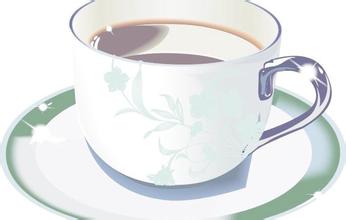Variety introduction of Robusta Coffee Price planting Environment Flavor description treatment method
Arabica coffee accounts for 75 percent of the world's coffee production, and quality varies widely, from good to bad. In recent years, a few countries (such as India) have made efforts to improve the quality of Robusta coffee. They grow Robusta coffee at high altitude, apply the most careful care and fine washing treatment, and the result is very excellent quality Robusta coffee beans! Top Robusta beans are not cheap either, get rid of the old impression that Robusta is all cheap beans! Therefore, the quality of coffee beans can no longer be judged by the crude and outdated old standard of "Arabica beans" to judge the quality of "Arabica" coffee requires complicated manual picking, selection and careful processing, so the most expensive and best coffee beans in the world are "Arabica" coffee. Robusta coffee is usually used to make instant coffee and canned coffee because of its low cost. A few of the better quality "Robusta" coffees are also used in blends (mixed with Arabica coffee) to make espresso beans.
other differences
Robusta seeds account for 25 -35% of coffee bean production, and their main producing country is Indonesia (One of its coffee beans is a water-washed coffee bean, a hybrid of Robusta and Arabica, the only coffee bean that can be drunk as a single product in the Chinese market), Vietnam, Africa,(West African countries centered on Ivory Coast, Nigeria and Angola), Vietnam has devoted more attention to coffee production in recent years and included it in national policies (Vietnam also produces a small amount of Arabica coffee beans)
Robusta's coffee tree is a kind of tree between shrubs and tall trees, long leaves, bright green color, trees up to 10 meters tall, but the roots are very shallow, fruit is slightly rounder than Arabica coffee fruit, beans are flat round, the center pit is straight.
Robusta has a distinctive aroma (known as "rob", some people say it's moldy) and bitterness, and if mixed with other coffees at 2-3%, the entire cup becomes rob (therefore, Robusta beans are not drinkable as single-serve beans).
Its flavor is as bright as some strong, but if you want to taste it directly, I am afraid you have to be mentally prepared.
Robusta coffee is generally used in industrial coffee production such as instant coffee (which produces about twice the amount of coffee extracted from Arabica), canned coffee, and liquid coffee.
The caffeine content is much higher than that of Arabica, which is about 3.2%
Arabica coffee beans grow at higher elevations in the tropics, where it is cooler. The lower elevations, where Arabica beans do not grow, are the home of Robusta.
Robusta is planted in lowlands at an altitude of 200-600 meters. It likes warm climate. The temperature requirement is 24 - 29℃. The rainfall requirement is not high. However, this variety depends on insects or wind to transmit pollen. Therefore, coffee takes 9-11 months from pollination to fruit, which is longer than Arabica.

Important Notice :
前街咖啡 FrontStreet Coffee has moved to new addredd:
FrontStreet Coffee Address: 315,Donghua East Road,GuangZhou
Tel:020 38364473
- Prev

Nicaraguan Maraka Dula Coffee Flavor description characteristics introduction to the taste of high-quality coffee beans
When tasting Nicaraguan coffee, it is best to drink cold water first, so that you can better feel its mellow taste. Drink coffee while it is hot, because the tannins in Nicaraguan coffee are easy to change during cooling, and the taste becomes sour, which will affect the flavor of the coffee. You can add the right amount of sugar, and then add cream. Enjoy a cup of high quality Niga
- Next

Variety introduction of Robusta Coffee Price planting Environment Flavor description treatment method
Arabica coffee accounts for 75% of the world's coffee production, and its quality varies widely, from good to bad. In recent years, a few countries (such as India) have devoted themselves to improving the quality of robusta coffee. They have planted robusta in high altitude areas, given the most careful care, and carefully washed the coffee. As a result, they get very good quality robusta coffee beans! The top Luo.
Related
- Detailed explanation of Jadeite planting Land in Panamanian Jadeite Manor introduction to the grading system of Jadeite competitive bidding, Red bid, Green bid and Rose Summer
- Story of Coffee planting in Brenka region of Costa Rica Stonehenge Manor anaerobic heavy honey treatment of flavor mouth
- What's on the barrel of Blue Mountain Coffee beans?
- Can American coffee also pull flowers? How to use hot American style to pull out a good-looking pattern?
- Can you make a cold extract with coffee beans? What is the right proportion for cold-extracted coffee formula?
- Indonesian PWN Gold Mandrine Coffee Origin Features Flavor How to Chong? Mandolin coffee is American.
- A brief introduction to the flavor characteristics of Brazilian yellow bourbon coffee beans
- What is the effect of different water quality on the flavor of cold-extracted coffee? What kind of water is best for brewing coffee?
- Why do you think of Rose Summer whenever you mention Panamanian coffee?
- Introduction to the characteristics of authentic blue mountain coffee bean producing areas? What is the CIB Coffee Authority in Jamaica?

